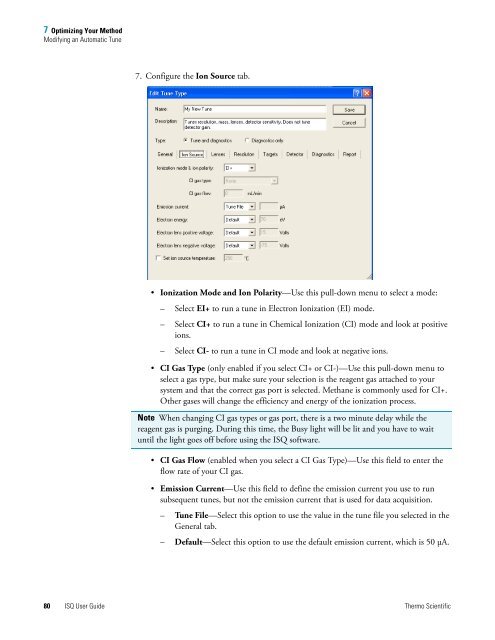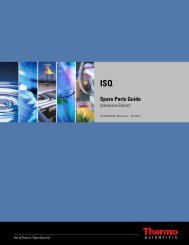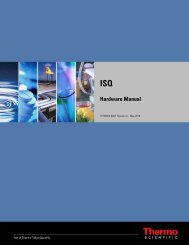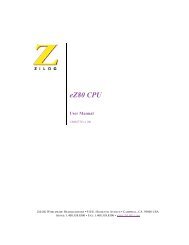ISQ User Guide - Write Frame of Mind
ISQ User Guide - Write Frame of Mind
ISQ User Guide - Write Frame of Mind
You also want an ePaper? Increase the reach of your titles
YUMPU automatically turns print PDFs into web optimized ePapers that Google loves.
7 Optimizing Your Method<br />
Modifying an Automatic Tune<br />
7. Configure the Ion Source tab.<br />
• Ionization Mode and Ion Polarity—Use this pull-down menu to select a mode:<br />
– Select EI+ to run a tune in Electron Ionization (EI) mode.<br />
– Select CI+ to run a tune in Chemical Ionization (CI) mode and look at positive<br />
ions.<br />
– Select CI- to run a tune in CI mode and look at negative ions.<br />
• CI Gas Type (only enabled if you select CI+ or CI-)—Use this pull-down menu to<br />
select a gas type, but make sure your selection is the reagent gas attached to your<br />
system and that the correct gas port is selected. Methane is commonly used for CI+.<br />
Other gases will change the efficiency and energy <strong>of</strong> the ionization process.<br />
Note When changing CI gas types or gas port, there is a two minute delay while the<br />
reagent gas is purging. During this time, the Busy light will be lit and you have to wait<br />
until the light goes <strong>of</strong>f before using the <strong>ISQ</strong> s<strong>of</strong>tware.<br />
• CI Gas Flow (enabled when you select a CI Gas Type)—Use this field to enter the<br />
flow rate <strong>of</strong> your CI gas.<br />
• Emission Current—Use this field to define the emission current you use to run<br />
subsequent tunes, but not the emission current that is used for data acquisition.<br />
– Tune File—Select this option to use the value in the tune file you selected in the<br />
General tab.<br />
– Default—Select this option to use the default emission current, which is 50 μA.<br />
80 <strong>ISQ</strong> <strong>User</strong> <strong>Guide</strong> Thermo Scientific






